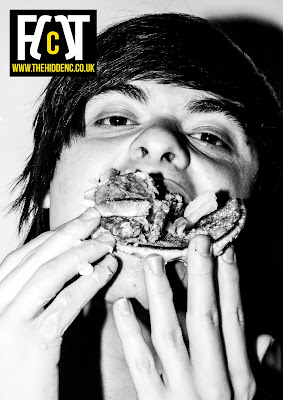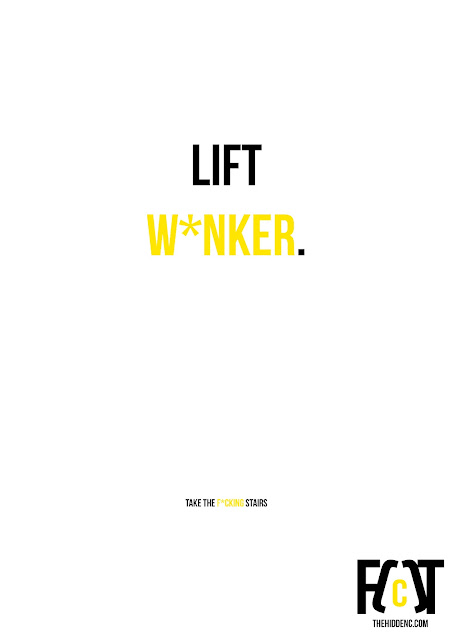You have been given a task. You are required to produce a graphics response that engages with a specific audience. Your response should consider the context and environment in which you aim for it to be delivered. You will need to identify this as part of your initial concept proposal.
You should aim to identify, analyse and use existing means of distributions in order to select an appropriate method of communication.
The task/ topic which our group was given was 10,000 steps. As a group we researched the topic and found out that it was an average amount of steps that the average person should be doing a day to keep healthy. To get the ball rolling we took a night to brainstorm our ideas and get down on paper what we would like to do as a design concept.
My initial idea was to fight against the idea of walking 10,000 steps, and how it's just something which we are told to believe. I was hoping that we could make a selection of interesting booklets which would tell you all the information about how walking 10,000 steps a day would not make much of a difference to if you didn't walk that distance everyday. When taking this to the group we realized that the idea was good but the audience would be really hard to target, and it maybe wouldn't be as interesting and engaging as trying to make people walk 10,000 steps.
The idea that we originally went down the path of trying to create was the concept of having a pedometer that would link up with social networking sites and our own site, you would then be able to collect points for the steps you walk, e.g. 5000 steps 10 points. These points could be used to buy small gifts once collected up. You would also be able to compete with your friends by using our point system on the website.
Unfortunately this idea was scrapped due to the fact we had to make the pedometer, which would be very expensive and almost impossible in the time we had.
The audience we wanted to aim at was students, and to get students to actually do exercise is very unlikely without giving out something free.
We decided that we were just going to have to make awareness of the fact that most students don't exercise and that doing a little bit to contribute to improving their health doesn't take any effort.
We planned our project into three stages.
Stage 1: We would pin up shocking posters which would stir attention and ask questions. This would create interest and hopefully want people wanting more.
Stage 2: We would then create a hand out which would allow interactivity with our concept. The leaflet would give information on calories, steps, exercise etc. Shock images would also be included in this to keep it interesting.
Stage 3: We would then create a website which would give people a place to go to, to look at what our company is doing and achieving and allowing people to interact and talk to each other. Through this we would also see if our concept was working.
First of all we needed a company name, a specific colour swatch and a font to work with.
We were only aloud to use two colours including stock so we decided on using black with a mustard yellow on white stock. The black and white is very official along with the yellow which makes it stand out.
I came up with the name Fa(c)t and designed a few logos. I was playing on the fact that the C was meant to be hidden so the word spelt out fat.
Here are a selection of logos Jasper came up with, and the final logo we used:
Final logo:
For the font we used Bebas Neue which is very bold, it's more a header font, it shows authority and realy screams out the message at you.
The shock posters were the initial stage so we needed to concentrate on getting them up as soon as possible. We all designed a few posters each to see what type of style we wanted to go by, we decided on using either type or image. Below is a few i designed:
I was going for shock and humoR, i wanted to scare people, i focused two of my posters on the elevator to try and get people to take the stares.
Below is a selection of posters/ logos which the other group member came up with:
Jasper:
These posters were the negative one which were to shock and mildly offend. Below are the positive images which we were going to place up for encouragement:
Will:




Alex:
Half way through the project we had a critique. Upon showing the class our shocking posters we were told that they were not appropriate enough to be putting up around college. The posters had a fantastic concept, and they worked perfectly because of how they shocked everyone, but using offencive language and rude images was not allowed for the college.
We had to think up a new concept for our poster designs as quickly as possible because we wanted them to be up before the website and the leaflet.
We decided that we would create our own shocking images by stuffing our faces with food and taking photos of the horrible facial expressions, this wasn't as shocking as before but it was horrible and attention grabbing. I thought it would be a good idea to disfigure our faces with sellotape, showing that what we put into our bodies is what we're made up of and held together by, it also made the images more disgusting.
Posters designed from the shoot:










These posters were edited by Alex.
We also decided upon text based posters which would give you more of an insight into what messages we were trying to convey.









These posters were designed by Will.
We then stuck up our posters all around college:








Alex created a website, linked with twitter and facebook which would allow users to interact with each other and they'd be able to read useful facts and statistics which would help erge them to do a little more exercise.


Whilst designing the posters and the logos Melissa and Laura were left in charge of making the booklet. The booklet had four compartments which held four information cards, giving facts and again shocking images. The booklet can then fold out into an inforgraphic poster about calories and steps etc. The booklet was a lot more informative and less in your face.





Stickers were also designed by Will and Alex to be placed on the stairs. The stickers were a positive element to the stair option. A feel good gesture.



As an added extra Will designed a hotdog style booklet. The booklet included rude, humorous and attention grabbing statements which would help motivate you. The idea was to get students interested so we didn't want to just inform we wanted to intrigue and shock. The booklets linked more with the poster designs, using swear words and horrible images. I helped produce a few of the booklets along with Jasper and Will:












There was another element to our awareness campaign. So origianlly we were told we would have to ask to put our posters up, so we asked the college technicians and they said it was completely fine. After one night of our posters being put up the technicians had taken them all down and thrown them away. We didn't think this was very fair seen as we'd asked for permission and been granted it. So me will and jasper took it upon ourselves to create two posters:


We decided seen as it was such a problem to put posters up we would use this to our advantage and get whoever was taking them down to burn calories whilst doing so. We placed 100 of these posters all around college as college was closing. In the morning almost all of them had gone, which was a bonus because we'd got whoever was taking them down off there bottoms and helped them burn calories! It actually got people posting onto the facebook group telling us they'd taken a couple down, which showed that it had worked.
Response to self evaluation:
As a group what problem did you identify and why?
We were given the word 10, 000 steps. We identified the problem that students are eating to much rubbish and not exercising enough, and even the littlest changes in your lifestyle could effect your health.
What methods did you use to gather your evidence to prove this was a problem and what forms did it take?
We researched using the internet, collecting statistics about health and calories. We also asked questions on Facebook and created a questionnaire to get better results. We found that most students do not do exercise, either because they cant afford the gym or that they were to lazy to do any. Also most students drink on the weekends, and eat a lot of rubbish food which gave us a bigger reason to try and help the problem.
What methods of research did you find useful and why?
I found the data we collected from the students the most useful, because this allowed us to get an estimated percentage of students who do exercise and students who do not. It gave us raw information which we could then base our project around. It also gave us our reason for doing what we did and aiming it at students.
What research could you have carried out that would have proved more useful?
I think we could of spread the questions further than LCA. Asking Leeds Uni students would of proved helpful and effective and would of provided us with a bigger range of data to work from.
How did you manage the workload as part of a group?
We split our group up into specific job roles, but I believe the group was to big, we had too many people working on one thing and it just made it hard to decide whose work was going to be chosen. I think having the bigger group did mean work was done faster and more effectively due to the range of opinions and ideas, but I think the communication between such a big group was hard.






















No comments:
Post a Comment